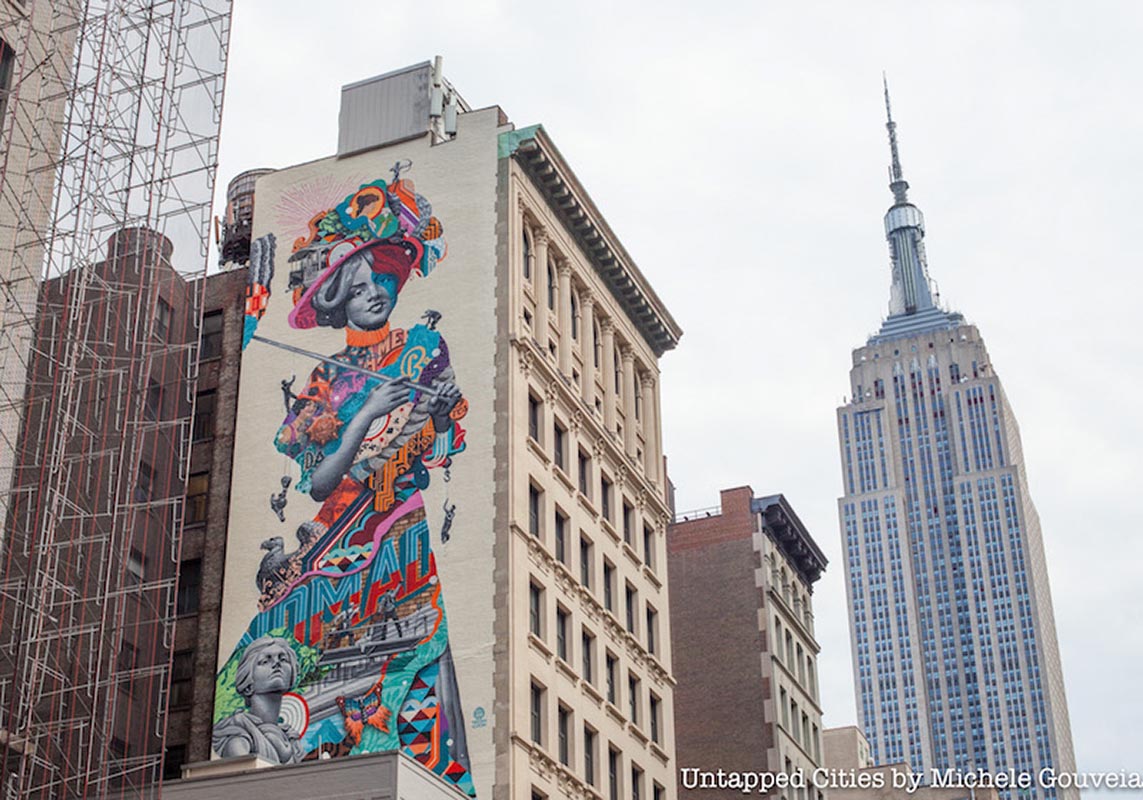A new mural in NoMad pays homage to the neighborhood’s past and the Gilded Age’s most infamous beauty, Evelyn Nesbit, who captivated New York City at the turn of the last century. Commissioned by the Kaufman Organization, the 97-foot tall mural was created by street artist Tristan Eaton on the side of 236 Fifth Avenue at West 27th Street in the heart of NoMad.
Nicknamed “The Gilded Lady,” the mural recalls a time when the area was the playground of the well-to-do with shops and restaurants as well as bars, bordellos, dance halls, gambling dens, and other places of entertainment. The mural incorporates a myriad of images including theatre bills, an eagle sculpture from the second Madison Square Garden, a policeman’s copper badge, and even a Tenderloin steak (a nod to an earlier name for the seedier section of the neighborhood). Dominating the mural though is the face of Evelyn Nesbit, model, muse, and show girl who was at the center of the original Trial of the Century.
 Evelyn Nesbit photographed by Gertrude Käsebier, 1901. (Image from Library of Congress)
Evelyn Nesbit photographed by Gertrude Käsebier, 1901. (Image from Library of Congress)
Evelyn Nesbit arrived in New York from Pennsylvania in 1900. Just 15 years old, the striking, dark-haired beauty who had modeled back home, was soon posing for the biggest artists of the day including Charles Dana Gibson who used her as the model for one of his Gibson Girls.
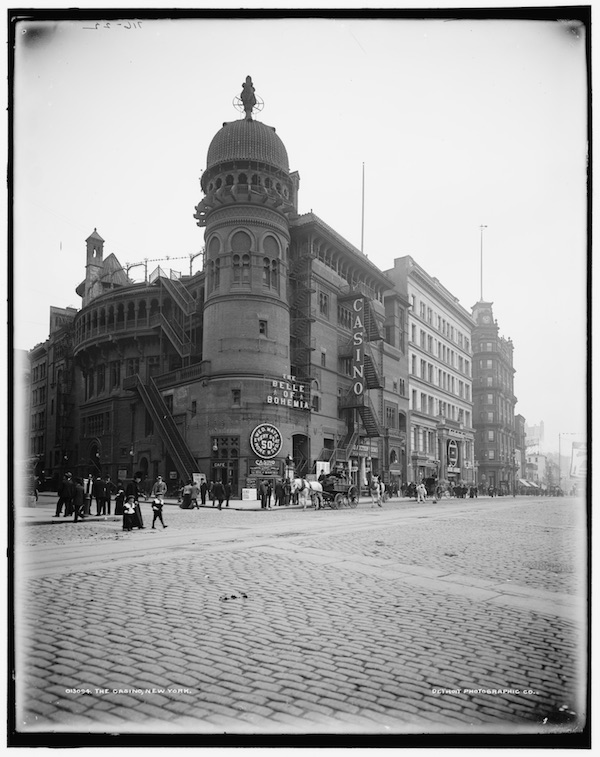 The Casino Theatre, circa 1900. Despite its popularity, it was torn down in 1930. (Image from Library of Congress)
The Casino Theatre, circa 1900. Despite its popularity, it was torn down in 1930. (Image from Library of Congress)
Nesbit, who was living with her mother and brother in lodgings on East 22nd Street, soon grew bored with modeling and decided to go on stage. She joined the company of the musical comedy Floradora at the Casino Theatre, located at 1404 Broadway. A predecessor to the Ziegfeld Follies, the show was noted for its beautiful Floradora girls and featured the first chorus line in the country.
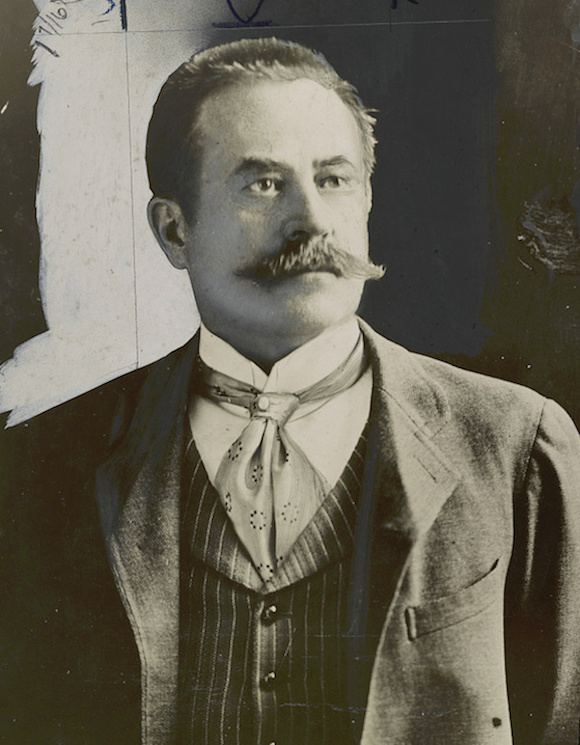 Stanford White, circa 1900. (Image from Library of Congress)
Stanford White, circa 1900. (Image from Library of Congress)
Her role in the show brought Nesbit new admirers including noted architect Stanford White. Along with his firm of McKim, Mead & White, he designed some of the most important buildings in New York at the time including the Washington Square Arch, the Players Club, Bronx Community College, and the original Pennsylvania Station. White took an interest in Nesbit and was soon acting as a benefactor to her family.
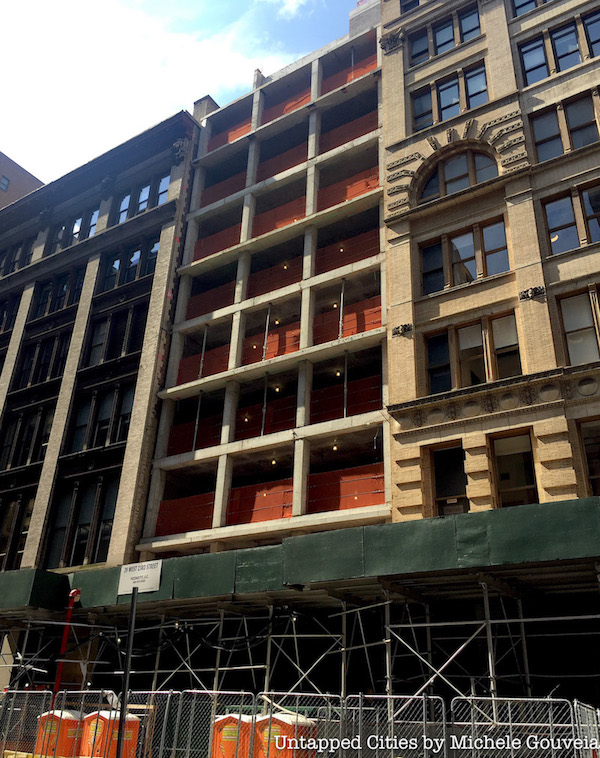 The building with the red velvet swing fell into neglect later in the century and finally collapsed in 2007. Today, there is a new apartment building going up in its place.
The building with the red velvet swing fell into neglect later in the century and finally collapsed in 2007. Today, there is a new apartment building going up in its place.
But White did not have the young girl’s best interests in mind. The married 47-year old often invited young girls to his private lodgings at 22 West 24th Street. Entering the plain-looking building, they would encounter an opulent, multi-floor apartment filled with Persian rugs, priceless artwork, and a red velvet swing on which the girls were encouraged to play. It was here, on a night in 1901 when her mother was out of town, that White drugged and raped the 16-year old Nesbit. She told no one and continued to see White over the course of the year.
When Floradora ended, Nesbit moved down the block and joined another musical, The Wild Rose, at the Knickerbocker Theatre, one of Times Square’s demolished theaters, at 1396 Broadway. Playing the part of a “Gypsy Girl,” Nesbit won over more admirers including a young John Barrymore who had yet to join the family business (acting). The two were introduced at a party hosted by White and fell in love. Yet when Barrymore proposed marriage, Nesbit turned him down, most likely due to White and her mother’s disapproval.
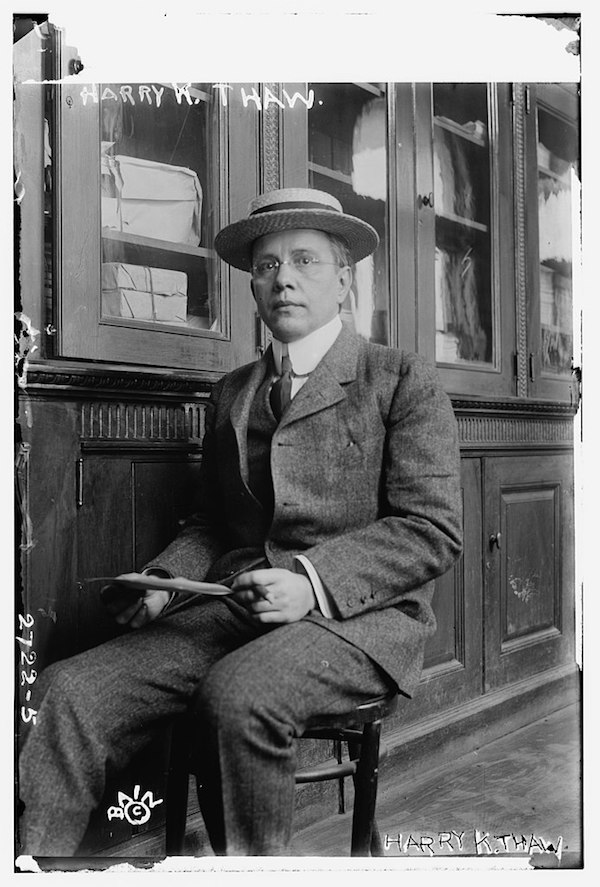 Harry K. Thaw, circa 1910-15. (Image from Library of Congress)
Harry K. Thaw, circa 1910-15. (Image from Library of Congress)
Harry K. Thaw was more persistent. The millionaire son of a Pittsburgh coal and railroad family, Thaw pursued Nesbit for months. Mentally unstable and often displaying violent tendencies, he was also obsessed with White. While on a trip to Europe with Thaw and her mother, Nesbit finally told him what had occurred that night with White. Thaw’s response was to beat and rape Nesbit. Nonetheless, she married him in 1905.
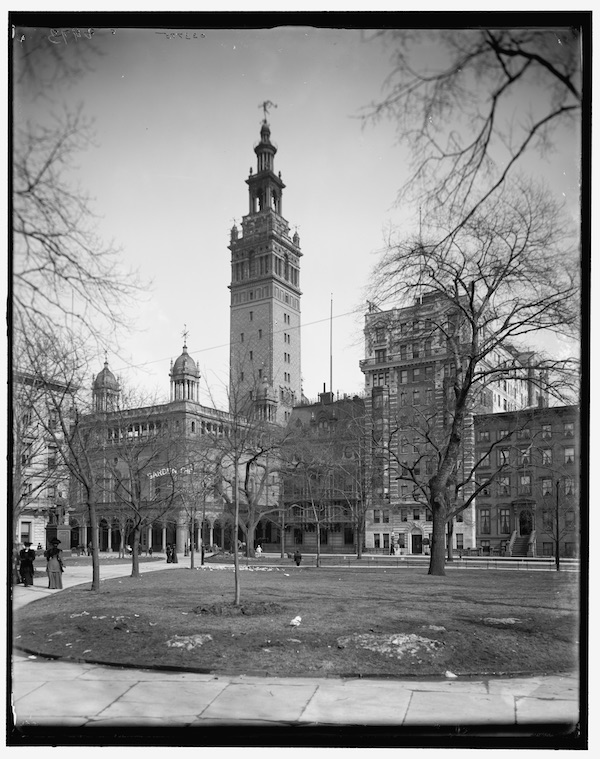 The Second Madison Square Garden, circa 1900. This Garden would be demolished in 1925 and replaced with the current New York Life Building. (Image from Library of Congress)
The Second Madison Square Garden, circa 1900. This Garden would be demolished in 1925 and replaced with the current New York Life Building. (Image from Library of Congress)
On the night of June 25, 1906, the Thaws attended the opening night of Mam’zelle Champagne, a new revue at the rooftop theatre of Madison Square Garden. This was the second Garden (it replaced the first Garden that had been built in 1890). Located on the corner of Madison Avenue and East 26th Street, it was designed by White with a tower topped with a scandalous nude sculpture of Diana by Augustus Saint-Gaudens.
White had a private apartment in the tower and was in attendance at the theatre that evening. During the final song, a visibly agitated Thaw walked up and shot White three times, killing him instantly. The crowd at first thought it was part of the show before the horror of what had transpired set in.
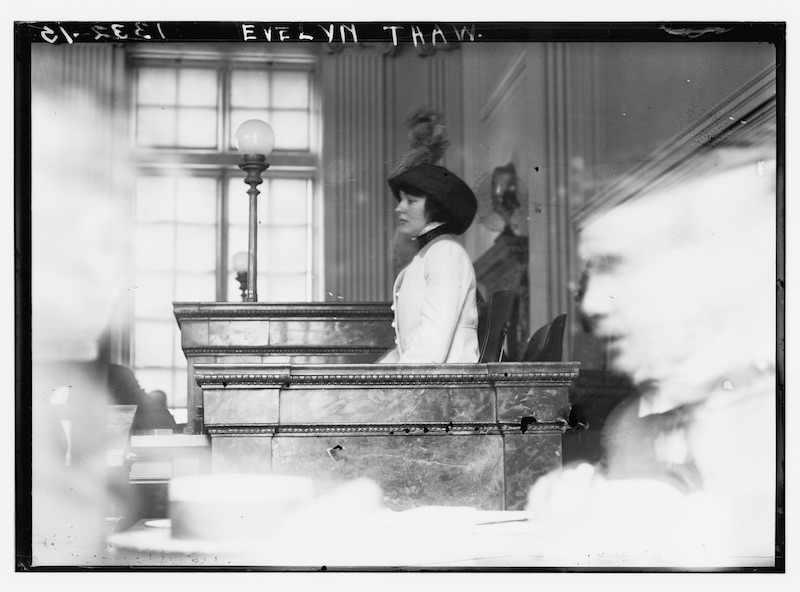 Evelyn Nesbit Thaw testifying at her husband’s trial. (Image from Library of Congress)
Evelyn Nesbit Thaw testifying at her husband’s trial. (Image from Library of Congress)
Thaw was arrested and what followed was dubbed the Trial of the Century. Nesbit testified in court and her actions and outfits were carefully documented by reporters who hung on her every word. She recounted her relationship with White in detail including the rape. The trial quickly turned into a condemnation of Stanford White and his lifestyle with many in the press portraying Thaw as a “defender of American womanhood.” Nesbit meanwhile was seen as a “lethal beauty.”
The trial ended in a hung jury. Thaw was tried a second time and found not guilty by reason of insanity and committed to Matteawan State Hospital for the Criminally Insane.
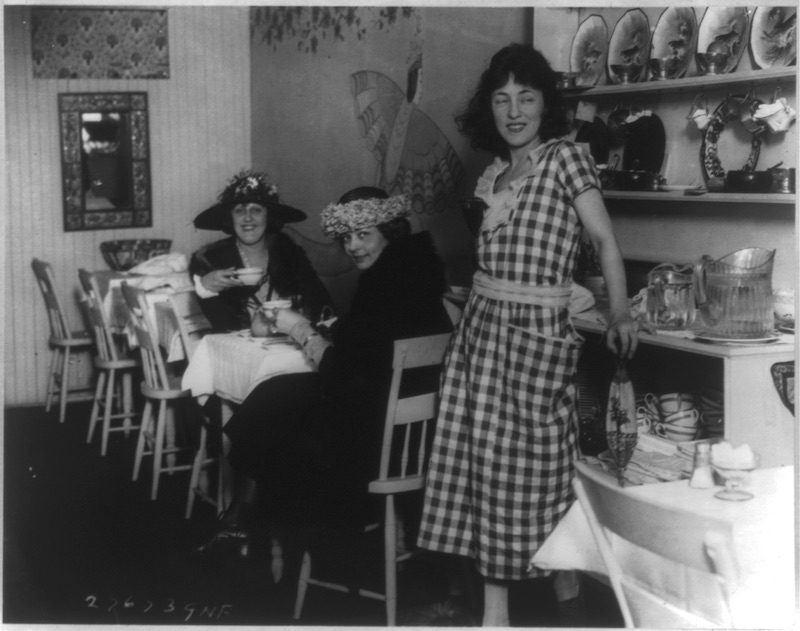 Evelyn Nesbit in her tearoom, 1921. (Image from Library of Congress)
Evelyn Nesbit in her tearoom, 1921. (Image from Library of Congress)
Nesbit’s life was never the same. In 1910, she gave birth to a son, Russell William Thaw, who she claimed Thaw had fathered during a conjugal visit (he denied it). There was a second marriage that ended in divorce. She acted in a handful of silent films and some stage shows, wrote two memoirs, and even ran a tea shop at 235 West 52nd Street in the 1920s. None of these endeavors were successful and she soon faded from the spotlight. Nesbit died in 1967 at the age of 82.
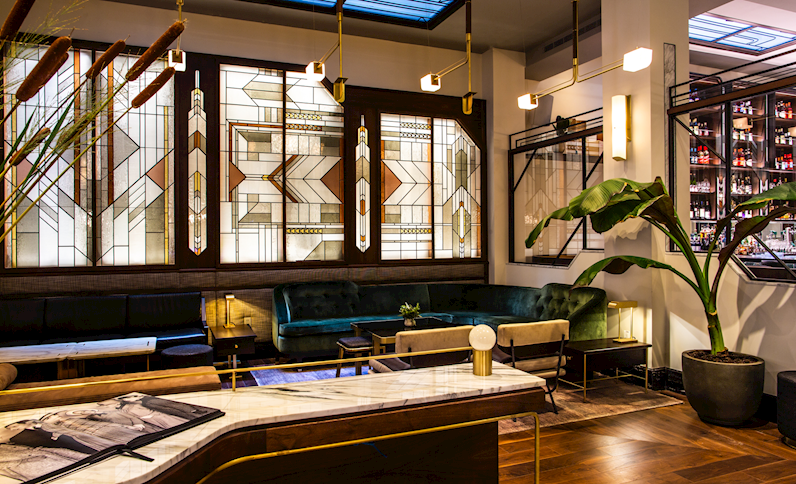 The lobby of the Evelyn Hotel. Image courtesy of Triumph Hotels.
The lobby of the Evelyn Hotel. Image courtesy of Triumph Hotels.
Her memory lives on in NoMad. Just a block away from the new mural, the Evelyn Hotel (opened in 1905 as the Hotel Broztell) at 7 East 27th Street is named after the beauty who once held Gilded Age New York in thrall.
Next, check out 20 Buildings in NYC Designed by Stanford White. Join us for a upcoming tour of the Remnants of the Original Penn Station:
Tour of the Remnants of Penn Station
Get in touch with the author @madcapheiress25.






